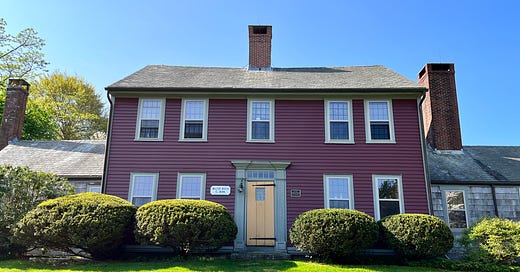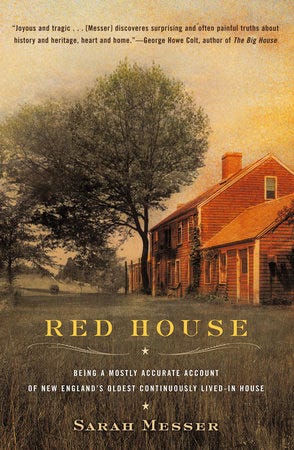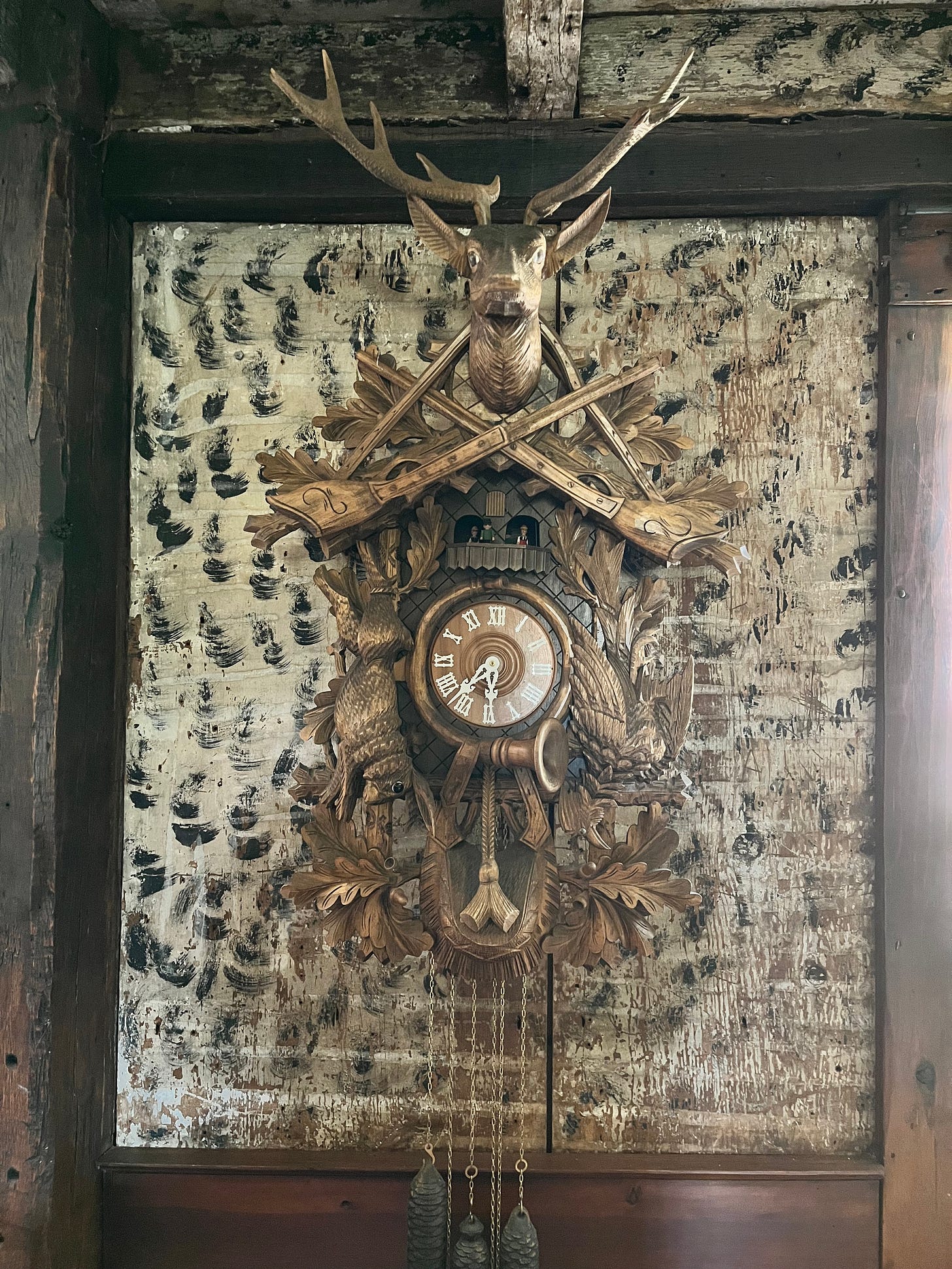Last week I went to see my friend Sarah Messer who was visiting her family in Marshfield, Massachusetts. I’ve known Sarah for almost thirty years now, and though we don’t see each other often, our conversation just seems to pick up where it left off when we last spoke.
Sarah grew up in a house that has the peculiar (and probably inaccurate) moniker of “the oldest continuously inhabited house in New England.” Hard to prove. There are a number of provable facts about the house, however: that until Sarah’s parents bought the house, one member or another of the Hatch family had lived in the house, and that it had never left the family. It has been dated to 1647, and the oldest part of the house is evident in a cellar beam which can be seen deep inside a creepy stone cellar. Over the centuries, additions were made to the house, but the changes that it underwent were mostly conservative. For many years, it has been referred to as the Red House because, in thrifty New England fashion, suspicious of change, the owners just kept painting it the same color.
I have stayed at the Red House numerous times, and I just love it. There are wide-plank floors—some easily 18 or 20 inches wide—throughout the house. Plank walls with old clanking hardware on the doors connect a bewildering warren of upstairs rooms with no hallways. There are ghoulish, charred closets bristling with hooks where meat was smoked. There’s a “borning room,” once designated for births and deaths, and a “corn chamber” where grain was stored. On this visit, I stayed in the bedroom that had belonged to Israel Hatch, whose ghost is said to visit in the night when he is also known to lie down on the bed—surprising guests with his steady, invisible and mysteriously dense presence lying next to sleepers.
Sarah wrote a fascinating book that is both a history of the house, and a memoir of growing up in it. I love this book, and not just because I love Sarah. If you’re into old houses, ghost stories, family sagas and beautiful prose, this book might just be for you.
During some renovations of the house, ceiling and walls were uncovered. Underneath was a peculiar paint pattern. Made with lampblack or soot and swirled onto milk paint, the leopard spots covered several rooms. It’s likely this dates to the late 1600’s or early 1700’s. The effect is fascinating, and also a little sinister. I hope no one ever paints over it.
I snapped a few other photos you can see, including the haunted bedroom where I spent the night:
Keep reading with a 7-day free trial
Subscribe to From the Wunderkammer to keep reading this post and get 7 days of free access to the full post archives.







